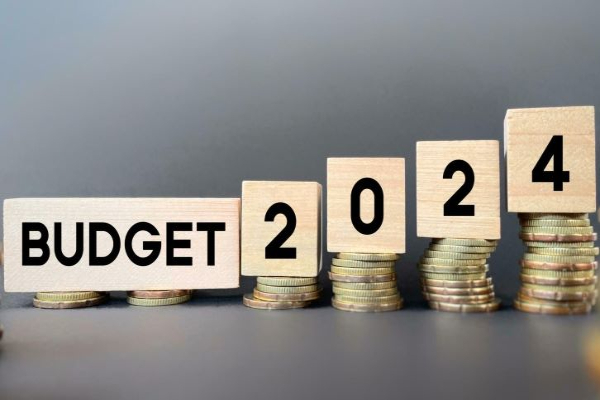The standard theory of optimal taxation posits that a tax system should be chosen to maximize a social welfare function subject to a set of constraints

With the theme of the Union Budget, 2024-25 basing particular focus on employment, skilling, MSMEs, and the middle class, the idealism appears to be far from comprehensive in achieving a progressive budget planning across every strata of the country’s macroeconomic landscape.
The Union Budget appears to be banking on its own overzealousness by declaring a budget size of nearly Rs 48.21 lakh crore while the Gross Tax Revenue has only been projected to be around Rs38.40 lakh crore and a significant portion of the budget i.e. around Rs 11.6 lakh crore is expected to be generated from market loans.
The implications of floating market loans as a way of infusing funds for an upcoming annual budget mandates that the government ought to weigh the benefits of immediate liquidity against the long-term implications of increased debt and by simultaneously maintaining a balanced and transparent approach.
The considerations which prompt a comprehensive debt management strategy does not appear to be in place in the present Budget 2024-25, one that would ultimately balance the need for funds with long-term fiscal sustainability.
Increased interest payments
on govt expenditure
Further, the Centre's expenditure which has been recently declared by the Union Finance Ministry reveals that the interest payments pertaining to other central sector expenditure has been consistently mounting at the rate of approximately 10.63 % per year. This is evident after observing the interest payments for the financial years: 2022-2023 at actuals amounting to Rs 928,517 crore while the revised estimates for the financial year 2023-2024 amounts to Rs10,55,427 crore and the budget estimate of the interest payment for the financial year 2024-2025 has been projected to be Rs 11,62,940 crore.
In critically analysing the question as to whether it was financially proper to incur increased interest payments on governmental expenditure, the response from the academic literature seems disconcerting.
Even the International Monetary Fund (IMF) often advises countries on balancing fiscal stimulus with maintaining debt sustainability. In its World Economic Outlook reports, the IMF discusses the importance of ensuring that borrowed funds are used efficiently to support growth and development.
The perceivable disadvantages would enumerate thus:
Debt sustainability
Rising debt levels from continuous borrowing increases the debt burden. If the debt grows faster than the economy, it can become unsustainable, leading to higher future taxes or reduced public services.
Fiscal strain
High interest payments can consume a significant portion of the budget, limiting the government's ability to fund other essential services and investments.
Crowding out
Increased government borrowing can lead to higher interest rates in the broader economy, potentially crowding out private investment.
Market confidence
Excessive borrowing can erode investor confidence, leading to higher risk premiums and borrowing costs. Resultantly, the country’s budgeting exercise ought to control its financial leverage.
Financial leverage
in State budgeting
Financial leverage in state budgeting refers to the use of borrowed funds to finance government expenditures and investments.
It allows states to amplify their financial capacity beyond the constraints of their current revenues, enabling them to undertake larger projects and stimulate economic growth.
Jones et al. (1997) and Joyce (2001) discuss the implications of financial planning and debt management in state budgets
The optimal use of financial leverage can potentially enhance a state's ability to invest in infrastructure, education, and other essential services without immediate tax increases.
However, excessive reliance on debt can lead to significant disadvantages including:
Future obligations
Increased interest payments can lead to higher overall debt, obligating future budgets to allocate substantial portions of their revenue to service debt rather than fund current public services and investments (Diamond & Saez, 2011).
Increased tax burden
To manage rising debt and interest payments, future administrations may need to increase taxes, which can be politically challenging and economically disruptive (Diamond & Saez, 2011).
Macroeconomic stability
Economic vulnerability: High levels of public debt can make a state more vulnerable to economic shocks, potentially leading to financial instability and reduced investor confidence (Diamond & Saez, 2011).
From a personal tax perspective
While the standard deduction for salaried employees is proposed to be increased from ₹50,000/- to ₹75,000/-, in the new tax regime, the tax rate structure is proposed to be revised whereby the income tax payable by an individual earning about Rs 12 lakh per year would be around Rs 80,000 in the assessment year. Whether this measure of imposing personal taxes amounts to fairness in light of the heightened projections for enthusiastic government expenditure remains in the realm of ponderance.
Optimal budgeting design
The optimal design of a tax system is a topic that has long fascinated economic theorists and flummoxed economic policymakers (Mankiw et al., 2009).
The standard theory of optimal taxation posits that a tax system should be chosen to maximize a social welfare function subject to a set of constraints. The literature on optimal taxation typically treats the social planner as a utilitarian: that is, the social welfare function is based on the utilities of individuals in the society. In its most general analyses, this literature uses a social welfare function that is a nonlinear function of individual utilities. Nonlinearity allows for a social planner who prefers, for example, more equal distributions of utility. However, some studies in this literature assume that the social planner cares solely about average utility, implying a social welfare function that is linear in individual utilities (Mankiw et al., 2009, p. 4).